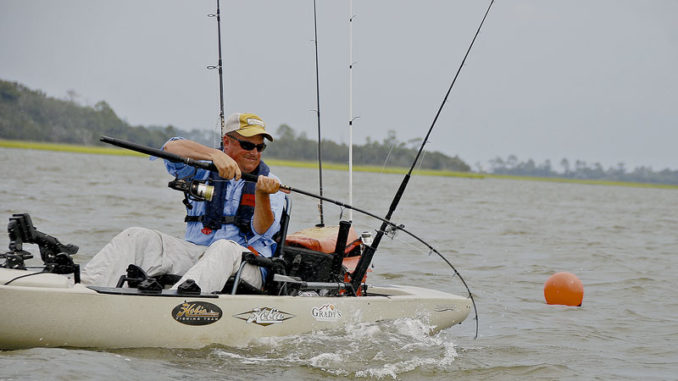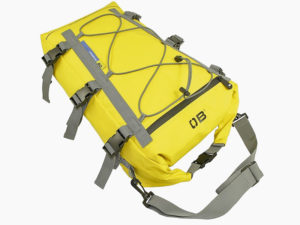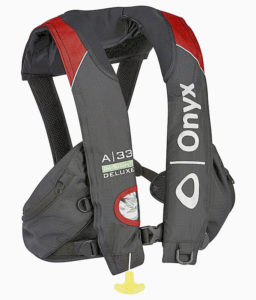
With a little preparation, kayak anglers can fish the big water
Kayak anglers, like old sailors from a 1970s pop song, often yearn for the open ocean.
And it’s that time of year.
Bottomfish are moving from deeper, offshore waters to nearshore waters. And migratory fish are starting to make their way north or south. If you intend to put the US of A in your rear-view mirror and England off your bow — hopefully, way off your bow — there are a few things to consider to make it safely to and from open water.
First and foremost, open saltwater in both Carolinas means more current, more wind, more tide and possibly more and definitely bigger powerboat traffic than anywhere else. Open water should not be a solo trip. And beginning kayak anglers should seek the company of experienced paddlers to learn the ropes.
When launching and landing through the surf or into an inlet on the edge of the surf, conditions can change drastically between sunrise, when waters are typically calm, and the afternoon when wind and tides have changed. Spend some time studying tide and wind for the best locations to launch and land. Inlets frequently provide more protection than a heavy surf landing on the beach.
Like anywhere else, fishing tackle will be dictated by the species you hope or expect to catch. You may need substantially heavier tackle, particularly leaders, than you would use inshore. Nearshore fishing also provides an opportunity to catch numerous bottomfish that may not be of tremendous size. So don’t burden yourself with overly heavy tackle if you’re out to catch whiting and flounder.
Stay protected
Sun protection on a June day becomes a top priority, as there’s no other protection from the sun than what you bring. Clothing has become the preferred protection over sunscreen, with today’s lightweight, breathable SPF built-in fabrics.
Hydration is also at the top of the list. Water doesn’t have to be kept cold to keep you hydrated. And having a large container — or several smaller containers — of fresh water tucked away in a storage space can be a lifesaver. That’s especially true if you find yourself on the water longer than anticipated.
Both Carolinas require that a Type I, II, or III personal flotation device be accessible to kayakers over the age of 12 (SC) and 13 (NC). Those under-age must wear the device. The best advice for kayak anglers at any time is to wear an approved PFD, period. Inflatable models must be worn to be considered approved devices. And they also offer comfortable, restriction free movement.
Anchor in open water
Fishing nearshore waters in the Carolinas ranges from being an exciting way to fish to a real pain in the butt to downright dangerous. In brief, paddling in or even within sight of the open ocean is not for novices, nor for experienced solo paddlers.
One of the biggest issues is current, which can range from mild to raging depending on things like tides and wind. Kayak anglers either go with the flow or anchor down and fish in it. Going with the flow is much easier and certainly less gear-intensive, but it can also land you further from shore or further down the beach than you planned to be.
To fish a stationary location, anchoring may be your best option. Anchoring on a sand bottom is very difficult without the use of a pivoting fluke anchor, aka a Danforth anchor. In order for the flukes to hold, the angle of the line needs to be more parallel to the bottom. In order to achieve this angle, at least 3 1/2 times the amount of anchor line is needed to the depth of water in which you’re anchoring. For example, 20 feet of water will require 75 feet of anchor line.
Anchoring offers two benefits to kayak anglers
Aluminum Danforth anchors work well and don’t weigh a whole lot. One way to cheat (a little) on the amount of anchor line is to lead off with 6 feet of anchor chain.
Once you’ve calculated the drop upcurrent from where you want to anchor, use a soccer ball-sized poly ball to float your connection point. Tie another length of 10 to 20 feet of line to attach to your kayak.
Anchoring in this fashion has two benefits. The first is to negate any direct downward pull against your boat. Strong tides can easily sink a kayak tethered directly to the bottom. The ball allows the force of tide to pull parallel to the surface.
The second is that the tag line can be quick released in an emergency or when a large fish is on, allowing you to fight the fish and return to the same spot without resetting the anchor between battles.
Best Bets for kayak anglers
NORTH CAROLINA
WHAT — Whiting, sheepshead
WHERE — Outer Banks
HOW — Anchor or drift over any structure or deeper cut off the beach and use a Carolina or bottom-fishing rig with live bait.
LAUNCH — Some launch areas may be as simple as launching from the beach and paddling out to the area you want to fish.
INSIDER TIP — Drift fishing is also popular where anglers launch from one area, drift down the beach with the current, then take out at another.
SOUTH CAROLINA
WHAT — Sharks, redfish and bottomfish
WHERE — Inlets from Charleston to Hilton Head
HOW — Anchor or drift using large pieces of cut whiting, mullet or other fresh fish. For bottomfish, use frozen squid on a fish-finder rig.
LAUNCH — Some inlets on the southern coast have beach access where you can launch in slack water, paddle into or through the inlet and fish nearshore sandbars.
INSIDER TIP — Plan your launch around the tide. It’s much easier to paddle out on an outgoing tide, then come back in on the incoming tide.
Overboard waterproof deck bag

OverBoard is the leader in waterproof bags and cases, with customers and distributors in more than 70 countries.
This is a 100% waterproof, roll-top bag that will keep your gear bone-dry on all your kayaking adventures. Made from sturdy and wipe-clean 600D PVC tarpaulin, the bag seals tight with OverBoard’s simple Fold Seal System. It also features high-frequency, welded seams. The pack has six easy side buckle connectors. If kayak anglers drop it in the water, it will float so you can get it back easily.
The bag also features a removable shoulder strap for easy transportation, a front weatherproof accessories/document pocket and storage webbing to easily store and locate smaller items.
MSRP is $72.99.
Available at over-board.com.
Onyx A-33 auto inflatable PFD
Onyx provides a reliable, dependable and trustworthy line of rainwear, inflatable life jackets (PFDs), fishing and hunting life jackets, pet vests and paddling life vests.

The A-33 In-Sight Deluxe “Tournament” Automatic Inflatable Life Jacket automatically inflates upon immersion in water or when wearer pulls the “jerk to Inflate” handle; it comes equipped with back-up oral inflation.
Easy to use, the In-Sight indicator shows GREEN if the product is armed and ready to use; shows RED if not ready to use.
Additional features include:
- Soft, extended neoprene neckline for all day comfort
- Padded air mesh for additional comfort
- Reflective material for greater visibility
- Adjustment body belt fits up to a 65-inch chest
- D-ring attachments
- Minimum buoyancy of 35 pounds when inflated
MSRP is $259.99.
Available at onyxoutdoor.com.





Be the first to comment